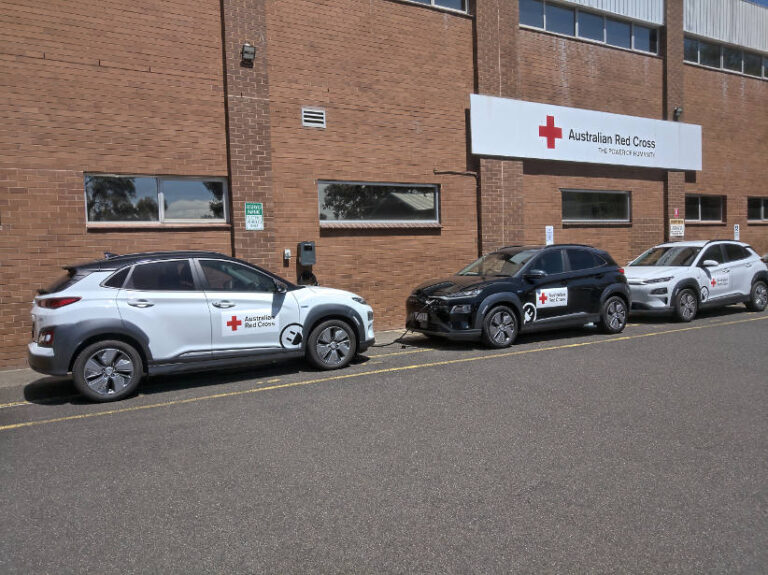The first post-lockdown AfMA event in Sydney saw a packed room of Fleet Managers and suppliers gather early in the morning for breakfast to hear from Paul Sor, National Asset Manager at Australian Red Cross, talk about the organisation’s EV journey.
He presented a detailed case study of the journey that The Australian Red Cross had taken to rollout of electric vehicles in the fleet. It sounded like a lot of work for five cars. Unfortunately that’s the challenge for organisations forging ahead towards a target of net zero emissions. The fleet is often low hanging fruit, however there aren’t any ladders so you need to build them yourself and learn from the process.
Sor did reveal the five year plan to the audience which will make the pain worth it. As the National Asset Manager, Sor oversees the buildings and other facilities which are being converted to renewable energy and solar power. So after the Australian Red Cross exits the ‘test and trial’ phase of electric vehicles, and the manufacturers have multiple models on offer in large quantities, they will be able to convert the majority of the 350 car fleet into EVs and charge them using the energy from the sun.
One of the great things about the AfMA Professional Development Forums is the interaction from the audience. At the start of the presentation a survey was conducted to identify the obstacles for organisations to transfer to a greener fleet. Supply and infrastructure were the top two and surprisingly, range wasn’t even mentioned.
Even with vehicle supply issues and limited EV infrastructure, organisations are continuing to push towards zero emissions driven by a number of motivations including:
- Environmental concerns
- Carbon offsets
- Financial penalties
- Rising fuel costs
- Brand reputation
- Supplier contracts
- Stakeholder interests
- Community pressures
To get started on the EV ‘test and trial’ phase, Sor suggested talking to everyone and sharing the experiences rather than treating the knowledge as intellectual property. There’s a lot of planning before you even consider which car to buy.
For example, you’ll need to allow a minimum of $1,000 to paint the charging bay green with EV parking signs and to install bollards so drivers don’t hit the charger on the wall. You’ll also need to think about the length of the charging cables so they can reach adjacent bays to avoid getting ICEd.
Building your own charging infrastructure comes with a number of challenges. You don’t just call your electrician and run a cable after you’ve bought the charging hardware. You need to work with a Charge Point Operator (CPO) to provide the software to run the system. And they’ll need to know some answers to a number of questions such as:
- Will this be used for company cars only?
- How do you want to allocate the costs to each department?
- If you allow private EV owners to charge, is it free? Or, how much do you want to charge?
- Can the electrical system handle the load of multiple vehicles charging at the same time?
- Do you want to charge only in off-peak?
- How will you record the odometer readings?
- Who owns it? Company or landlord?
The overall message from this presentation was – START NOW. Even if it’s only one car there are lost of things to consider and learn before rolling out to an entire fleet.







